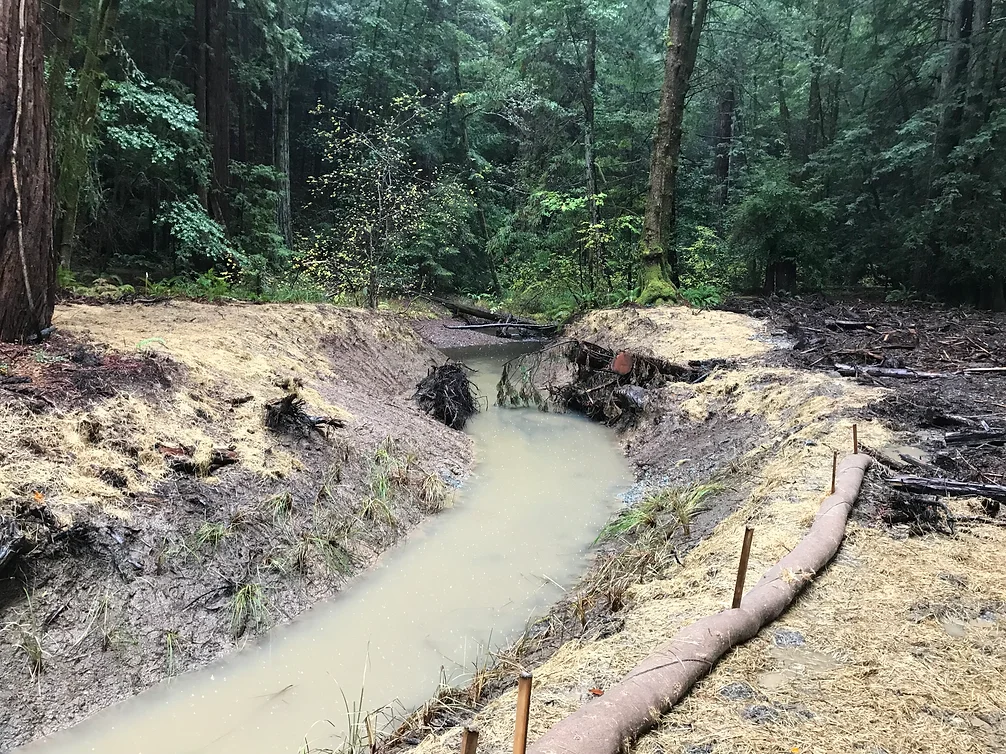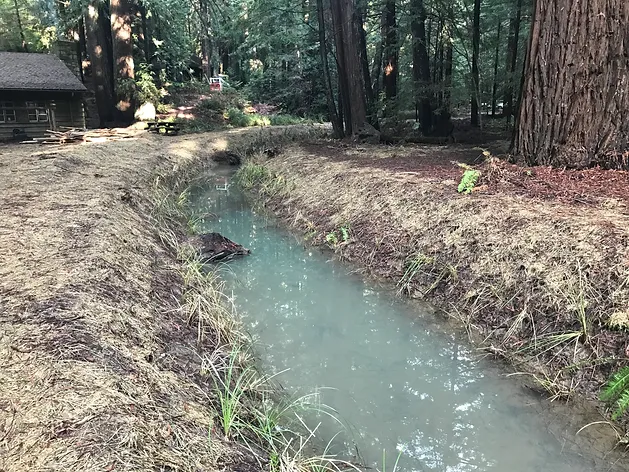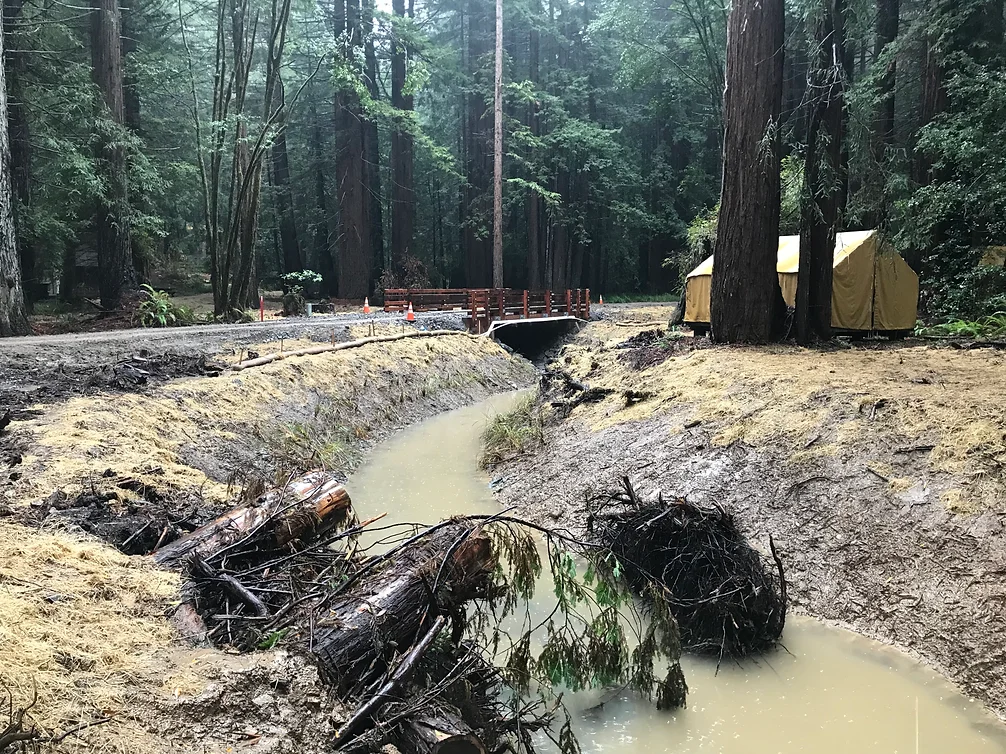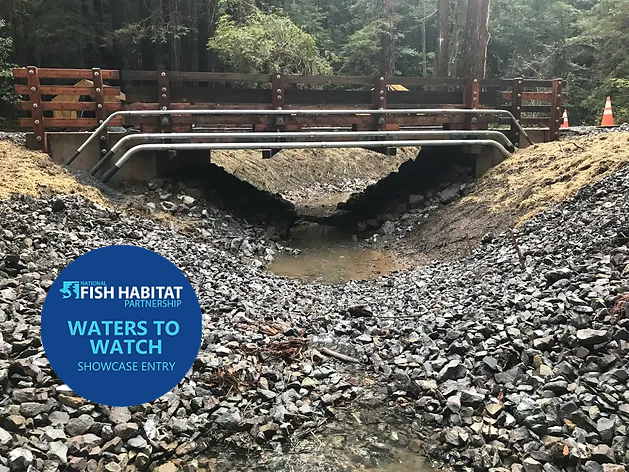Manly Gulch Coho Access and Habitst Restoration Project
Location of Project: 39.33505974 : -123.70058890 at the Manly Gulch crossing
Description of Project: The project will consist of restoration and minor realignment of 600 feet of Manly Gulch, a tributary to the Little North Fork of the Big River, to connect Manly Gulch directly to the Little North Fork. The project will eliminate annual juvenile coho and steelhead stranding within Manly Gulch due to sediment aggradation and sheet flow through parking areas and the floodplain; providing off-channel high-flow refugia for juvenile salmonids during elevated flows in the Little North Fork of the Big River; and provide access for both juvenile and adult salmonids to over 4,000 feet of spawning and rearing habitat in the upper reaches of Manly Gulch identified by Ross Taylor and Associates (2007).
Description of why this barrier is a high priority project: The PAD lists the Manly Gulch barrier is a temporal barrier; however, a fish passage assessment performed by Ross Taylor & Associates (RTA,2007) classifies it as a RED (100%) barrier for both adult and juvenile salmonid ingress and egress to and from Manly Gulch.
The name(s) of the recovery plans and the specific task that name this barrier as a high priority: A fish passage assessment performed by Ross Taylor & Associates (RTA 2007) recommends that “State Parks consider the treatment of this location as a “high priority” stream” by re-establishing the natural channel alignment of Manly Gulch with riffles and pools and installing a property sized crossing under Camp Road.
The California Fish Passage Forum has nine overall objectives. This project will help to address:
1. Remediate barriers to effective fish migration.
5. Coordinate funding mechanisms to remove fish passage barriers.
7. Facilitate plans to monitor and evaluate fish passage restoration effectiveness to ensure accountability.
9. Implement education and outreach activities, targeting both the general public and fish passage practitioners
Anadromous fish species that benefit from this project: Coho salmon, steelhead/rainbow trout, Pacific lamprey
Miles of stream opened as a result of project implementation: .75 miles.
Location and distance in stream miles to downstream river structures, and whether each structure represents an insignificant, partial, or total barrier to fish passage: There are no known downstream barriers.
Location and distance in stream miles to upstream river structures, and whether each structure represents an insignificant, partial or total barrier to fish passage: There are no known upstream barriers.
How will the project be evaluated and measured for success: This project has a monitoring plan to assess success in achieving deliverables.
In 2018 the Forum nominated Big River to NFHP’s annual list of 10 Waters to Watch and it was selected. Read more here





